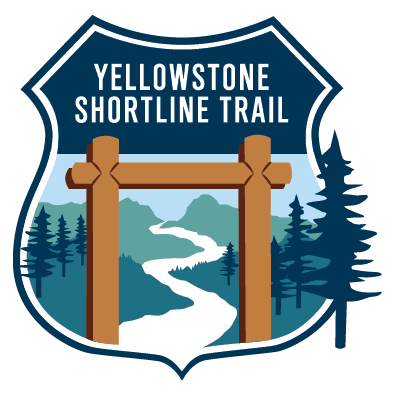Envisioning a “Rolling, Strolling Museum”
The Yellowstone Shortline Trail will follow a historic railroad route through Custer Gallatin National Forest to the historic district of West Yellowstone, MT situated at the western boundary and entrance of Yellowstone National Park. There are countless stories to be told, from America’s “Best Idea” and explorers venturing through Yellowstone atop penny-farthings to the introduction of automobiles and “See America First.” From the early days of poaching and lawlessness to the establishment of the National Park Service, this trail will provide the opportunity to enjoy nature as well as a chance to discover the past through interpretive signage. Below is a brief look at the rich history of the area.
Reenactment of early explorers in Yellowstone, 1960. NPS Photo.
1872 – Yellowstone National Park established as the world’s first national park.
1877 – Flight of the Nez Perce brought a fleeing band of Native Americans through the area.
1883 – First cyclists tour Yellowstone riding on penny-farthing bicycles. They made their way from Laramie via the Union Pacific Railroad and departed the train 85-miles from the west entrance in Beaver Canyon, Idaho.
1902 – Madison Forest Reserve established August 16th.
1905 – U.S. Forest Service formed from Bureau of Forestry and begins strong focus on protecting forests. USFS takes over management of Madison Forest Reserve.
1905 – E.H. Harriman, an executive of the Union Pacific Railroad, is invited to tour Yellowstone. At the time of his visit, the closest rail to the west entrance is in Monida. Immediately following his visit, Harriman authorized the Oregon Short Line, a subsidiary of the UPRR, to conduct surveys and prepare estimates for a line to Yellowstone’s west entrance. Construction of the Union Pacific’s Yellowstone Branch began in the fall of 1905.
Train at Reas Pass near West Yellowstone.
Clason’s Industrial Map of Montana, 1908.
1907 – Madison Forest Reserve is renamed Madison National Forest.
1907 – The “golden spike” is driven November 12th.
1908 – The first passenger train arrives to the area on June 11th and the community’s first businesses are there to accommodate visitors. In 1908, Madison National Forest grants leases at $10 a year to four enterprising men: Joe Clause, Sam Eagle, Charles Arnet, and L.A. (Dick) Murray. The west entrance quickly becomes the most popular entrance to Yellowstone National Park and remains as the most popular entrance over a century later.
1909 – Permanent depot in West Yellowstone completed in October.
1910 – Union Pacific’s construction of a generator building, installation of the generator, and construction of the water tower brought electricity and a new source of water to West Yellowstone.
1915 – On August 1st, Yellowstone National Park begins officially allowing automobiles to enter the park. Stagecoaches were phased out in 1917.
1916 – On August 25th, the National Park Service is created. The NPS took over control from the U.S. Army in 1918.
Automobiles in Yellowstone, circa 1910s.
Union Pacific properties in West Yellowstone circa 1950s.
1925 – To accommodate the increasing number of tourists, Union Pacific hires Gilbert Stanley Underwood to design a new eating facility. Construction begins in 1925 and the Union Pacific Dining Lodge is finished in time for the start of the 1926 tourist season.
1931 – December 16th, entirety of Madison National Forest is distributed among three other forests: Beaverhead, Gallatin, and Deerlodge National Forests. Area in and around West Yellowstone becomes part of the Gallatin National Forest.
1959 – The largest earthquake ever recorded in the Rocky Mountains strikes, causing damage in the surrounding areas, including the National Forest, Yellowstone National Park, and West Yellowstone.
Damaged road at Hebgen Lake following the 1959 earthquake.
Museum of the Yellowstone housed in Union Pacific’s old depot in West Yellowstone. The depot is part of the West Yellowstone Oregon Shortline Terminus Historic District.
1960 – Following years of declining passenger service, the Union Pacific ends regular passenger service to West Yellowstone after the 1960 tourist season.
1960s – Union Pacific’s buildings deeded to newly-incorporated Town of West Yellowstone
1983 – The West Yellowstone Oregon Shortline Terminus Historic District is added to the National Register of Historic Places.
1988 – Historic, unprecedented fires sweep through the park.
1998 – A group of locals work together to form the Yellowstone Historic Center, a local non-profit focused preserving the historic district of West Yellowstone and preserving the history and cultural heritage of the town and surrounding area.
2014 – The Gallatin and Custer National Forests consolidate into one forest.
2022 – Begin construction of the Yellowstone Shortline Trail.
2023 – All 9 miles of the trail are now ready to ride!

